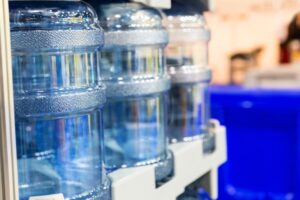How Long Do You Need to Test Water For Water Quality?
The length of time you need to test water depends on whether you have a public supply of water or use your own private well. You should always test your home’s water once a year for basic contaminants and every 3-5 years for more serious issues like lead or bacteria. If you have a private well or have any concerns about the water quality in your community, you should consult with your local health department to determine how often you need to test your well.
(Looking for rain water filtration systems? Contact us today!)

The best way to test your water for common contaminants is with a home testing kit. Most of these kits will contain test strips that you dip into a sample of water and then match to the color charts in the kit. The color changes can tell you the type of contaminant and how much is in the sample. These tests can provide results in as little as 10 minutes.
You can also test your water using a hand-held digital instrument. These instruments can be used to measure pH, dissolved oxygen, TDS, and other important water parameters. They are a bit more expensive than at-home test kits but can be very useful when you need to know exactly what is going on in your drinking water.
Some at-home test kits also require that you send samples of your water to a lab for analysis. If you choose to do this, you should take care to package your water samples carefully so they don’t get damaged during shipping. You should also keep them in a cool place until you’ve received your results.
There are a few different types of testing available for your water: physical, chemical, and microbial. The most commonly used test for water quality is a chemical analysis, which measures the levels of specific chemicals in the water.
In general, a chemical analysis should include a measurement of the total amount of inorganic minerals and salts present. This can help you determine if your water is safe to drink or if you need a filtration system.
Chemical analysis can also identify other substances that are affecting the water, such as pesticides or chlorine. These chemicals are not always harmful to humans, but they can cause serious damage to your water if left in the environment for too long.
Some of these chemicals can have a negative effect on your health and can affect the taste, smell, and overall appearance of your water. They may also affect the ability of your pipes to absorb and oxidize water, which can lead to corrosion.
The EPA sets standards for the presence of certain types of chemicals in your water, known as primary and secondary standards. These standards are based on long-term health effects, such as high levels of nitrates causing a condition called blue baby syndrome in infants.
Biological oxygen demand, or BOD, is a type of chemical analysis that measures the amount of oxygen in your water. BOD helps detect sulfides and other organic materials that could degrade or oxidize into hazardous chemicals.

